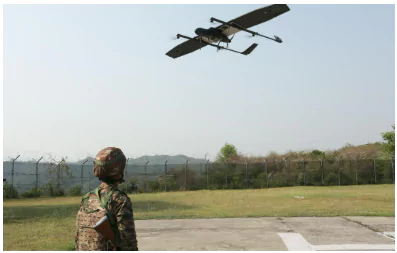![]() 31 May 2025
31 May 2025

Operation Sindoor marked the first major use of autonomous aerial systems in direct military combat between India and Pakistan.
 Key Components:
Key Components:
Private Sector Involvement in Autonomous Warfare
|
|---|

<div class="new-fform">
</div>